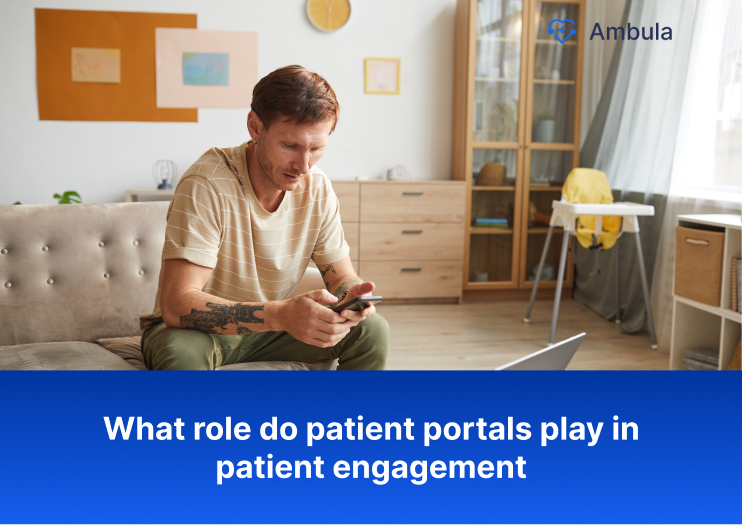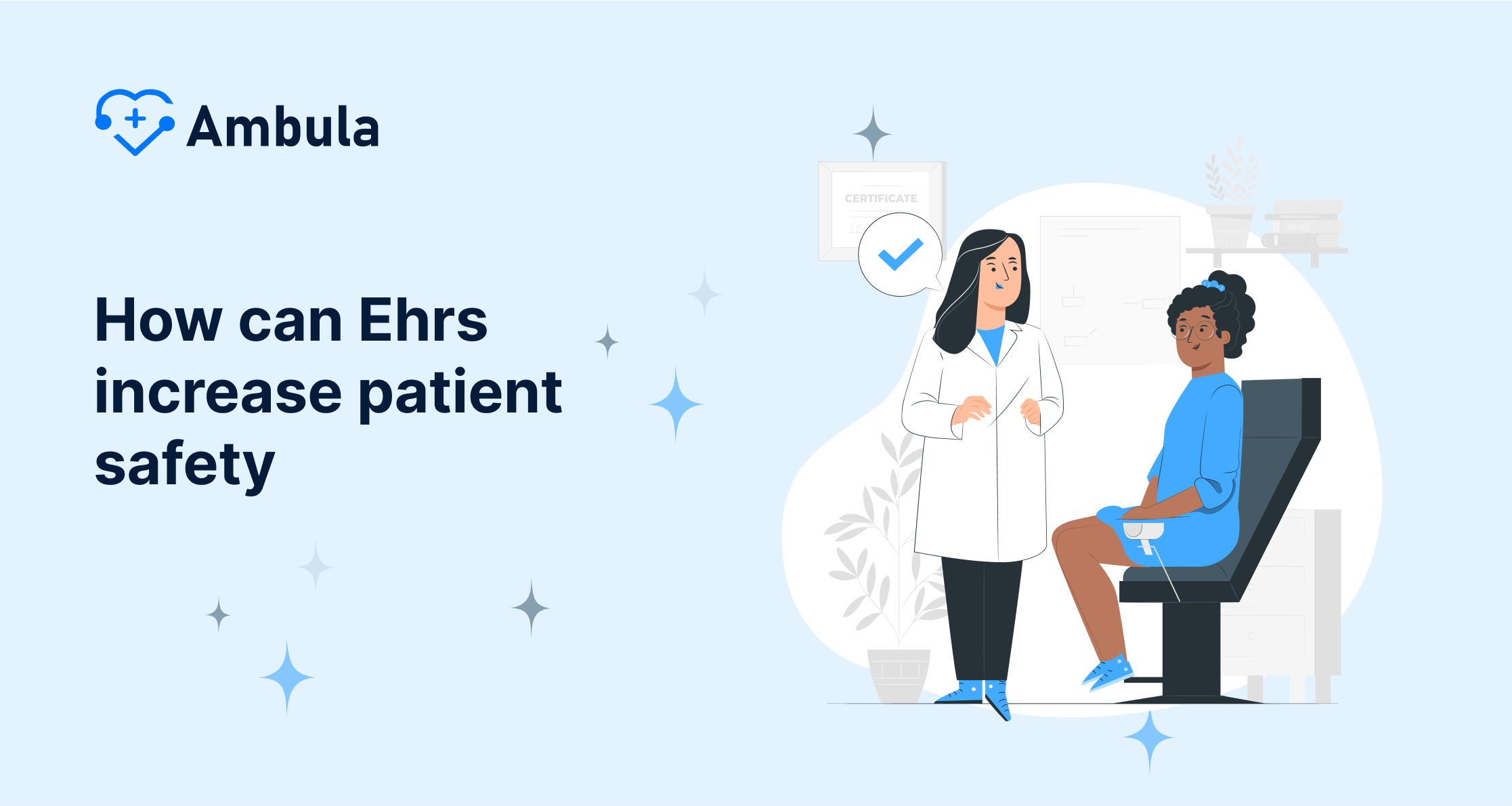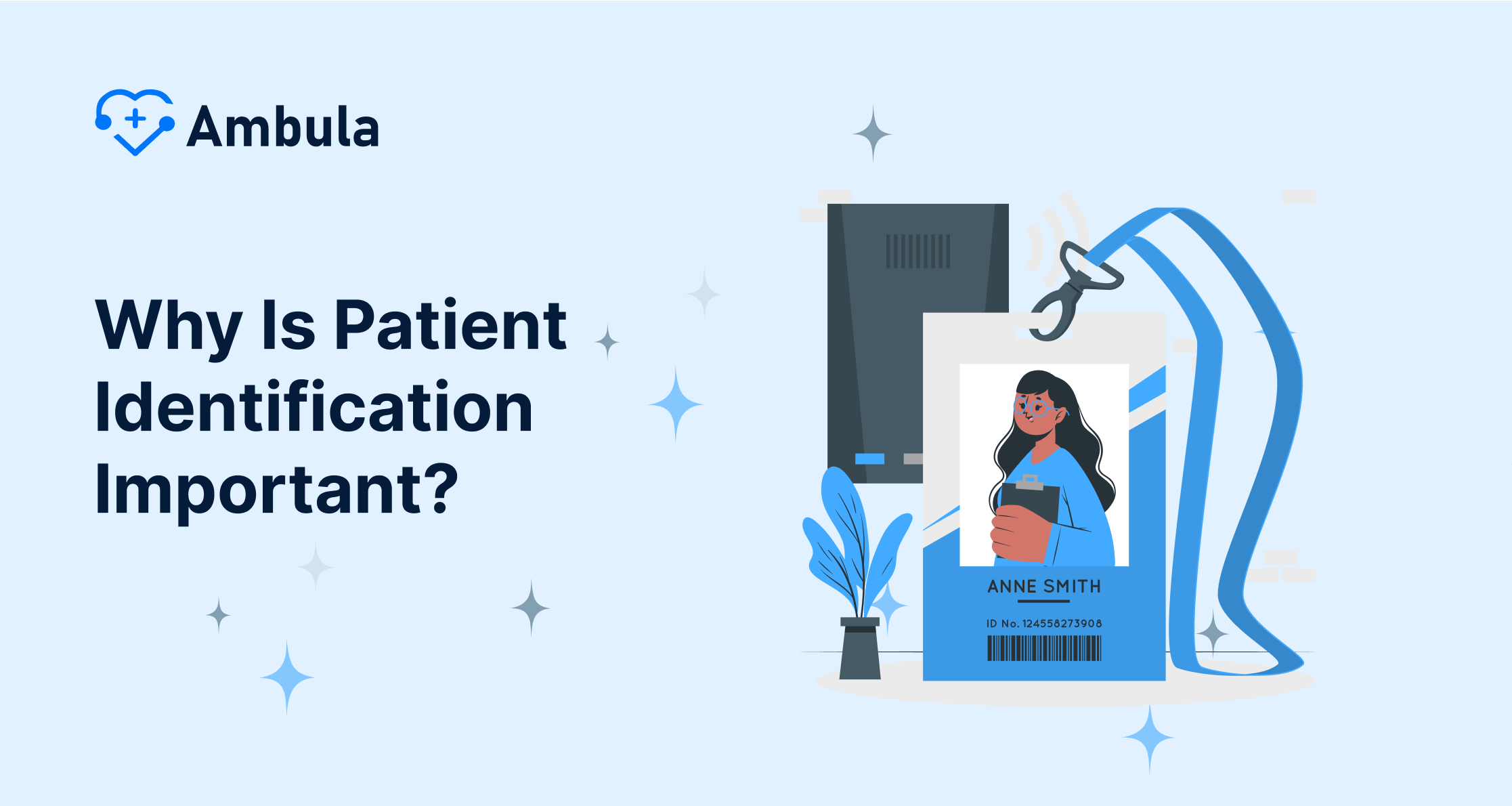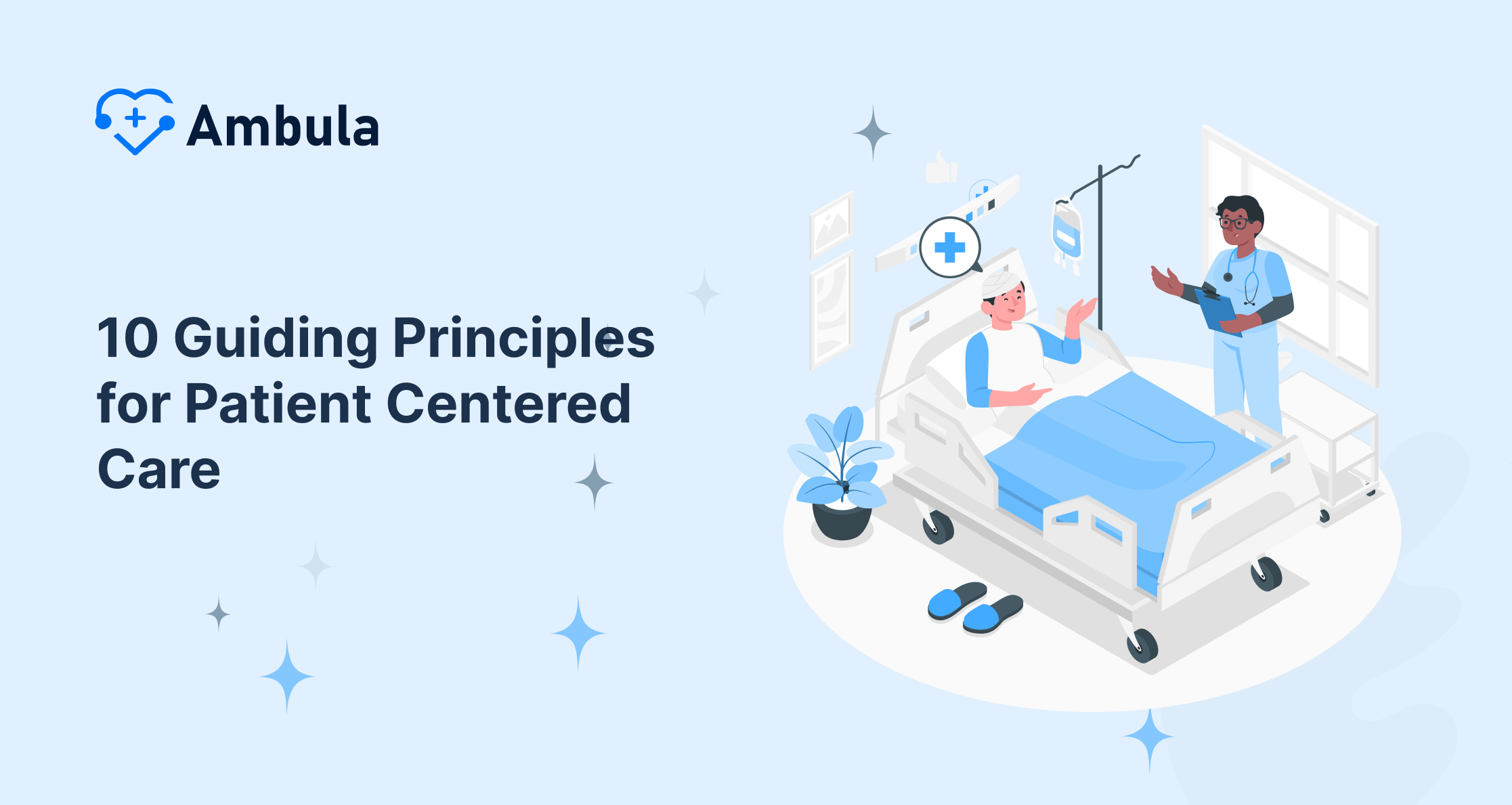
Patient engagement is a critical component of modern healthcare, and patient portals are one of the tools that healthcare providers use to facilitate engagement between patients and their care teams. This article will explore patient portals’ role in patient engagement, their benefits, and some best practices for implementing them effectively.
What is a Patient Portal?
A patient portal is a secure online platform that allows patients to access their health information, communicate with their healthcare providers, and manage their care. These portals are typically accessed through a web browser or mobile app, and they can be used to view test results, schedule appointments, and manage prescriptions.
Benefits of Patient Portals Patient portals have several benefits regarding patient engagement. These include:
- Improved communication: Patient portals allow patients to communicate with their healthcare providers promptly and efficiently. This means that patients can send messages to their care team, schedule appointments, and request prescription refills without calling the office or visiting in person. This can save patients time and effort and help providers respond to patient needs more quickly. Additionally, patient portals can be used for remote consultations, such as video visits, which can be especially beneficial for patients who have mobility issues or live far from their provider’s office.
- Increased access to information: Patient portals give patients access to their health information, including test results, medical history, and care plans. This can help patients better understand their health and actively participate in their care. For example, patients can view their test results as soon as they are available instead of waiting for a follow-up appointment. Patients can also access their care plan, which will give them a better understanding of the treatment and goal for their condition. This increased access to information can help patients identify potential issues or concerns more quickly and communicate them to their care team.
- Enhanced self-management: Patient portals provide patients with tools to manage their health, including tracking symptoms, setting reminders for taking medication, and monitoring chronic conditions. For example, some portals allow patients to input their blood glucose levels or blood pressure readings, which can help patients with diabetes or hypertension better manage their conditions. Additionally, patient portals can provide educational resources and health management programs to help patients learn more about their needs, which can improve patient outcomes.
- Improved coordination of care: Patient portals can help patients access their care team and other healthcare providers, leading to enhanced care coordination. For example, patients can use a portal to schedule appointments with different providers, view their care team’s availability, and receive appointment reminders. Additionally, patient portals can be used to share patient information with other providers, such as specialists, which can help ensure that all providers have the most up-to-date information about the patient’s health. This improved coordination of care can lead to
Empowering Patients with Information Access
By providing secure online access to EHRs, patient portals eliminate the need for patients to wait for appointments or make phone calls to retrieve their medical records. This convenience saves time and promotes patient engagement by enabling them to actively participate in their care. Access to their test results, medical history, and care plans allows patients to understand their health conditions better, track their progress, and make informed decisions about their treatment options.
Moreover, portals empower patients to become more active partners in their healthcare journey. By accessing their medical information, patients can ask more informed questions during doctor’s visits, identify potential discrepancies or errors in their records, and collaborate with their providers to develop personalized care plans. This increased engagement fosters a more patient-centered approach to healthcare, where patients are not merely recipients of care but active participants in their health management.
The impact of patient portals on patient empowerment extends beyond individual patient-provider interactions. Patient portals facilitate the exchange of data among healthcare providers by providing a centralized repository of health information, ensuring that all care providers have a comprehensive understanding of a patient’s medical history. This seamless flow of information can lead to more coordinated and effective care, reducing the risk of duplication of tests, medication errors, and adverse events.
Access to Personal Health Information
Access to Personal Health Information (PHI) through patient portals revolutionizes how you engage with your patients. As a physician, you’re concerned with treating ailments and ensuring your patients feel involved and informed about their health journey. Embrace patient portals as they provide a transparent window into your patient’s health’s vital stats and figures.
Imagine the difference it makes when patients can log in, anytime and anywhere, to view lab results, scan through visit summaries, and check immunization records. This convenience isn’t just about satisfying curiosity; it’s about empowering patients with knowledge. When patients see their cholesterol levels or HbA1c values, they make more informed lifestyle choices, and when it’s time to discuss treatment options, they come to the table prepared, leading to more productive consultations.
The numbers back this up. According to surveys, over 50% of patients who use portals feel they have a stronger connection to their healthcare providers. This isn’t surprising considering the sense of autonomy and control patients gain when they can actively monitor their health indicators. Every time a patient checks their latest entries, their engagement deepens. They’re not passive recipients of care; they’re active participants.
Addressing Barriers to Patient Portal Adoption
Despite their numerous advantages, the widespread adoption of patient portals is still hindered by various obstacles. These barriers can be broadly categorized into those related to patients and those related to providers.
Digital Literacy
Patients with limited digital literacy skills or lack of access to technology may find it difficult to navigate patient portals effectively. This is particularly prevalent among older adults, individuals with low socioeconomic status, and those residing in rural areas. To address this challenge, healthcare organizations can offer digital literacy training programs, provide access to computers and internet connectivity at healthcare facilities, and develop patient portals with user-friendly interfaces that cater to diverse patient populations.
Health Literacy
Patients with low health literacy may struggle to grasp complex medical terminology and concepts presented within patient portals. This can lead to confusion, anxiety, and a reluctance to engage with the portal. To overcome this barrier, healthcare organizations can develop clear and concise patient education materials tailored to different literacy levels, provide glossaries of medical terms, and offer support from health literacy specialists.
Perceived Need
Some patients may not recognize the value of patient portals, believing that their healthcare providers can adequately communicate all necessary information during in-person visits. To address this misconception, healthcare providers can actively promote patient portals during patient encounters, highlighting their benefits, such as convenient access to medical records, secure messaging, and online appointment scheduling.
Enhancing Patient Satisfaction and Loyalty
One of the key factors contributing to improved patient satisfaction is the enhanced communication facilitated by patient portals. Secure messaging enables patients to ask questions, clarify concerns, and receive timely responses from their providers, reducing the frustration and anxiety often associated with traditional methods of communication. This two-way communication fosters a connection and trust between patients and providers, leading to a more satisfying and personalized healthcare experience.
Patient portals also empower patients by giving them direct access to their medical records, test results, and care plans. This transparency allows patients to actively participate in their health management, making informed decisions and collaborating with their providers to develop tailored treatment plans. This sense of control and involvement enhances patient satisfaction and improves adherence to treatment plans and better health outcomes.
The convenience and efficiency offered by patient portals further contribute to patient satisfaction. Patients can schedule appointments, request prescription refills, and manage their health information from the comfort of their homes, eliminating the need for numerous phone calls or in-person visits. This flexibility saves time, reduces frustration, and promotes a more positive patient experience.
Medication Management and Prescription Refills
With the integration of patient portals, managing medications and handling prescription refills have become more efficient and patient-centric. As you sift through your daily duties, consider the impact of enabling patients to handle their medication needs online. Gone are the days of endless phone calls for refill requests. Now, with a few clicks, patients can request medication renewals, and you can review and approve them at your convenience.
This streamlined process is a game-changer. A study in the Journal of the American Medical Informatics Association found that online portals could reduce prescription refill turnaround time by up to 80%. That’s a significant cut from traditional methods, which often involve back-and-forth phone calls and manual entry.
The advantage for your patients is clear: They get a prompt, secure way to maintain their medication supply, which is essential for managing chronic conditions. And there’s a bonus—patients using portals for refills are more likely to adhere to their medication schedules. You understand the critical role compliance plays in outcomes; when barriers to refills are removed, adherence improves.
From your perspective, better medication management through portals means a well-organized workflow. You can verify prescriptions, check medication interactions, and respond to refill requests without disrupting your day. Your staff appreciates the reduction in administrative tasks, too.
Patient portals aren’t just convenient; they’re a step toward smarter, safer medication management. And let’s face it, with time as a precious commodity in healthcare, efficiency is paramount. Take a moment to consider how this aspect of patient portals can fit into your practice—it could be the right prescription for enhancing patient engagement.
Real-World Examples of Patient Portal Success
Geisinger Health System, a large integrated healthcare delivery system in Pennsylvania, has successfully implemented its patient portal, MyGeisinger. With over 70% of its patients enrolled in the portal, Geisinger has witnessed a significant increase in patient engagement and satisfaction. Patients actively use the portal to access their medical records, schedule appointments, communicate with providers, and manage their health information. This widespread adoption has improved clinical outcomes, reduced hospital readmissions, and lower healthcare costs.
Key Success Factors:
-
User-Friendly Design: Geisinger’s patient portal focuses on user-friendliness and accessibility, making it easy for patients of all ages and technological backgrounds to navigate the system.
-
Comprehensive Features: The portal offers a wide range of features that meet the diverse needs of patients, including secure messaging, appointment scheduling, medication management, and access to test results.
-
Active Provider Engagement: Geisinger’s healthcare providers actively encourage patients to use the portal and routinely incorporate portal communication into their patient care practices.
Implementing Patient Portals
To implement patient portals effectively, healthcare providers should follow these best practices:
- Ensure the patient portal is secure and protected from malicious actors. This means utilizing secure protocols, encryption, two-factor authentication, and other security measures to ensure the patient’s personal and health information is not exposed to anyone who isn’t authorized to access it.
- Provide training: giving patients instructions and resources on how to use the patient portal. This would include teaching them how to access and manage their health information, such as creating and updating their profile, viewing and updating their medical records, and securely sending messages to their healthcare team. This training should be tailored to the individual patient’s needs and level of understanding.
- Encourage use: healthcare providers actively encourage patients to use the patient portal. This could involve providing information about the portal during in-person visits, sending out emails or text messages with information on how to access the portal, or even offering incentives for using the portal. It is essential that healthcare providers actively encourage patients to use the doorway so that they can access and manage their health information and communicate with their care team easily.
Conclusion
In conclusion, patient portals play a critical role in patient engagement by improving communication, increasing access to information, enhancing self-management, and improving care coordination. By implementing patient portals effectively, healthcare providers can empower patients to take an active role in their healthcare and improve the overall quality of care.




